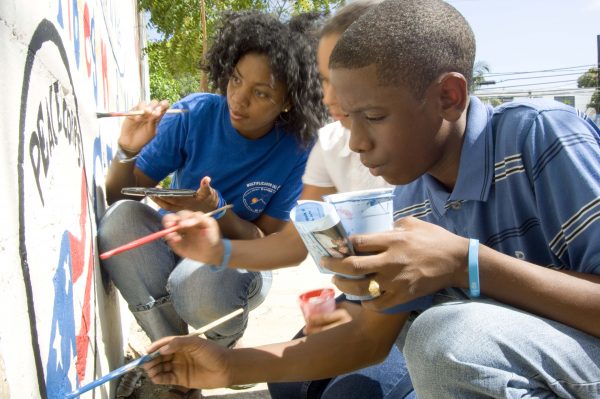
Students graduating from college now are searching for jobs at the same time as 1 in 5 American adults have filed for unemployment in the past month. A growing number may have applied to service programs like the Peace Corps or Teach for America — 1-3 year programs that come with a small stipend or require fundraising and are dedicated to a specific mission. Scholars have hypothesized that these programs allow students to explore their identity during an extended transition to adulthood. But new research from Alanna Gillis finds that there are distinct class differences in why students choose service programs.
Gillis interviewed 30 juniors and seniors at an elite public university who were considering service programs. She identified four different ways that students thought about their service opportunities. Some, for instance, saw service programs like Teach For America as pathways to employment, whereas others thought about service programs as a short-term, service-oriented experience before settling into a more stability-motivated long-term career. These ways of thinking corresponded with different social class backgrounds and orientations toward work values. But despite these differences, all of the students were using service programs to respond to constraints of the labor market.Social class and financial situations were key to how students saw service programs. For instance, one set of students were intrinsically motivated to do a service program because of the identity and values that they had developed in college. They saw service programs as a step towards a service-oriented career that they couldn’t yet precisely define. These students came from more privileged backgrounds or had qualified for large enough scholarships that they had little student debt. In contrast, students who came from more marginalized backgrounds and had more immediate financial precarity were more likely to be “backup planners,” interested in applying for service programs largely to make sure they had some form of employment immediately after graduation, even though they would prefer a full-time job.
Although these interviews took place in 2015-16, when economists saw the United States as mostly recovered from the 2008 recession, these students perceived difficulty in getting jobs. Whether service programs were a backup plan, an escape before taking a more constraining job, an explicit pathway into the labor market, or a short-term way to build human capital, service programs were a way to respond to challenges in the labor market. Given the horrific labor market during stay-at-home orders related to covid-19, it is likely that a lot of students are now backup planners. Considering that students in a good economy were looking to service programs to fill (and help jump) the gap between no job and a rewarding career, it is likely that service programs of all stripes will be more important than ever.

Comments